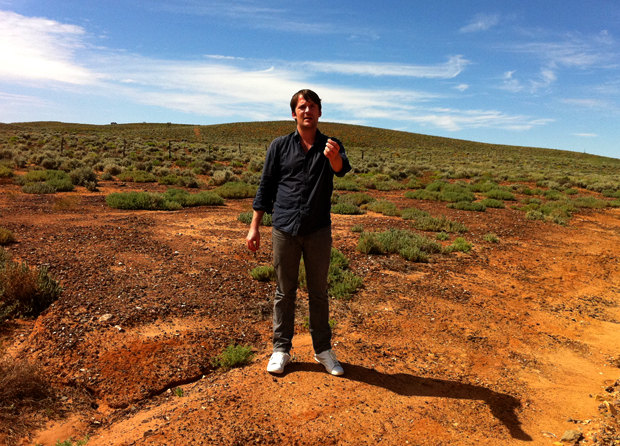
Day 4 - René Redzepi forages in the Outback with an aboriginal community
Kangeroo tail and bush bananas, Laura Gladwin continues on the trail of the chef in South Australia
René Redzepi travelled to Sydney, Australia, for the start of the Crave Sydney International Food Festival (until 31 October) during which he also promoted his book Noma: Time and Place in Nordic Cuisine. Cookbook editor Laura Gladwin went with him and reports on the days, dinners, and foraging that took place in Sydney and beyond, out in the bush.
Day 4
Saturday 2 October begins early with a flight to Adelaide, South Australia, then onto a couple of 10-seater charter planes to the Flinders Ranges, where we are met by chef and foraging expert Andrew Fielke and members of the Aboriginal Iga Warta community. As we drive through the bush, which is spectacularly carpeted with wild flowers following unusually high recent rainfall, they show René some of the indigenous foods that have formed an important part of the diet of the Adnyamathanha people for centuries. We taste quandongs (sour stone fruit), bush plums and bush currants, and René is particularly interested by a reed-like grass known as lemon grass. It has an aromatic citrus scent that’s far more pungent than Asian lemongrass, and it’s used to wrap meat before roasting, or with local pepper berries as a spice rub.
Next we meet the community leader, Terrence Coulthard, and tuck into a traditional lunch of kangeroo tail, which has been wrapped in bark and slowly roasted in a charcoal pit. Alongside it are delicious preparations made from locally gathered ingredients: a pickle made from bush bananas and wattle seed shortbreads are particularly good. After lunch, Terrence takes René for more foraging and a walk through a beautiful gorge to look at some incredibly well-preserved Aboriginal rock art.
Another hour’s drive takes us to The Prairie Hotel near the small town of Leigh Creek, where Andrew Fielke has created a dinner using bush foods. It starts with an antipasti plate of emu pâté, camel salami and bush tomato pickle, then barramundi fillets crusted with a dukkah made from bush spices follow, along with goat curry, chicken with bush tomato and slow-braised beef cheeks.
Having begun to understand some of the possibilities and complexities inherent within Australian cuisine, it seems a shame to have to leave so soon. The next morning René heads to Sydney airport for the plane to San Francisco.